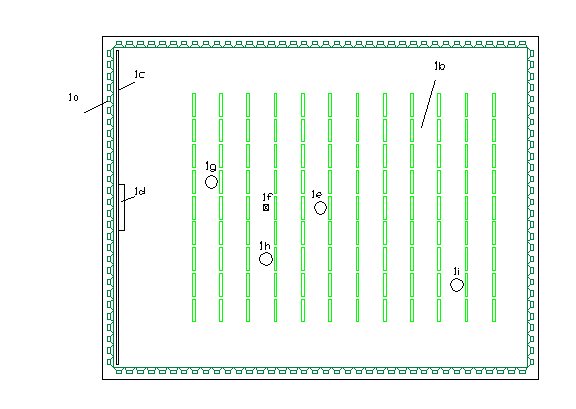Divergence of virtual acoustic sources at WFS
The reproduction of audio events is clearly improved by Wave Field Synthesis, because these virtual acoustic sources much more stably in the position as the phantom acoustic sources. Their position does not move any longer also, if the listener in the playback moves.
If the loudspeaker arrangement is developed around the listener, the virtual sources may be generated at any point inside or outside the loudspeaker arrangement. In order to decrease the effort, arrangeme nt is reduced onto a horizontal loudspeaker line around the listener in practice until today. Virtual acoustic sources beyond such loudspeaker arrangement gets produced very authentically inside the horizontal level of the loudspeakers. However, for establish virtual sources inside the arrangement, two elementary problems arise:
In range between the producing loudspeakers and the virtual source overlie the producer field with the user field. The concave wave fronts within that range lead to misguiding detection cues, because run time errors between the ears of the listener (ITD) develops. The acoustic waves apparently run into the false direction. Thus the listener may not have a high-quality rendition in that range between virtual source and the loudspeaker arrangement. These artefacts may be reduced with well-known procedures so far, but not eliminated.
Besides, during a coupled image representation the optical impression agrees for only one single listener place with the acoustic impression within the spectator range. That is to be clarified on the basis the representation in Fig.1:

It shows a loudspeaker line (1a) according to the principle of the wave field synthesis, arranged as ring around the listeners. The listeners within the spectator range (1b) see the picture of the acoustic source (1d) at the screen (1c). For the listener position (1e) within the spectator range the featured virtual acoustic source (1f) can be produced for a reference, at which the sound impression formidable agrees with the image representation. For all other listeners within the spectator range, the picture differs to those acoustic acoustic position.
The listener some rows in front (1g) hears the signal source represented in front at the screen from the rear. Moreover, the concave wave fronts between virtual source and lis tener leads to wrong detections. Thus, the range between the screen and virtual source is not usable in practice. For the spectator (1h) the acoustic source is visible in front at the right side. However, it acoustic source exactly beside. Spectator (1i) does listen the acoustic source intolerable quietly. The most acoustic perceptions don't agree with the optical one, which makes the whole perception completely improbable.
In consequence, we cannot use in practice virtual sound sources very closely at the listener, which is one of the most impressive advantages of the wave field synthesis, in case a visual depiction of the source is connected.
The acoustic perception of the virtual source inside the spectator range does not differ, in principle, from the acoustic perception of a material acoustic source at this point. Though, the problem results from the fact, the optically noticed signal source according to image representation cannot be produced at the same place. That fact also will not be changed in the future, by three-dimensional projection. However, the problem is solvable in certain degree. One possible solution is described at the DE 10 2006 054 961 A1 application.
It describes the way for maintaining the perceived source position still, if the physically source position became shifted onto a non critical location. That become possible, if the levels of direct wave and each of the first reflections become equalize differentiate. As far as each of those volumes remains at the previously level during the shift, the perception at the default point will remain unchanged. The correction values are easily calculable in the model bases approach. In case of the virtual source which establish the direct wave became a shift apart the listener, his moving across the playback room will cause lower changes in perception as the equivalent shift in the recording room. Shifting the virtual direct wave source towards the default listener's direction will cause the opposite effect. However, such possibilities are causing the absence of unwanted playback room reflections. Thus, near field condition or an anechoic chamber is the requirement.